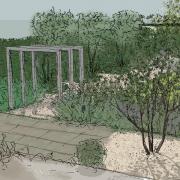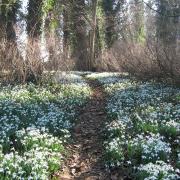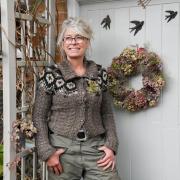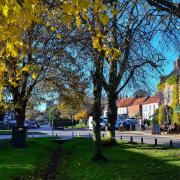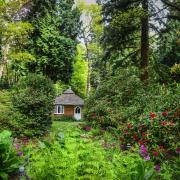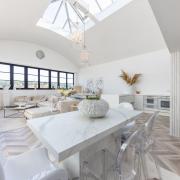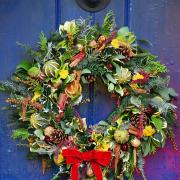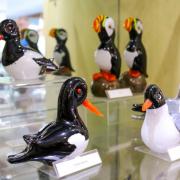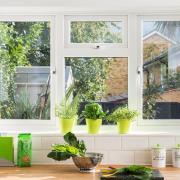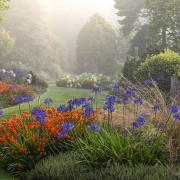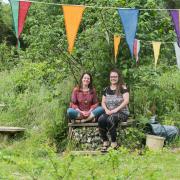It is Prince Albert, husband of Queen Victoria, who is credited with popularising the Christmas tree in England.
In the mid 1800s, he made spruce trees specially imported from Coburg in his native Germany the decorative centrepiece of the celebrations.
When periodicals published illustrations depicting the royal family decorating their Christmas tree together, the idea really took off.
However, Queen Charlotte, wife of King George III had actually brought Christmas trees over to England decades earlier.
And, of course, creating evergreen decorations for the home during the longest, darkest days of winter – decking the halls with boughs of holly - dates back to Pagan and Roman times.
During the 19th century, trees would be adorned with candles, sweets, fruits and small presents.
Today, thankfully, naked flames have been replaced by the much safer fairylights.
But putting the tree up – whether you can barely wait until December 1 or prefer to leave it until nearer Christmas Eve – is one of the most eagerly anticipated parts of the festivities.

However, having a tree poses something of a dilemma – is it more sustainable to have a real tree or to fake it?
It’s a question that led Norfolk solicitor Laura van Ree to branch out and create Eco Christmas Tree. Handmade from sustainable local wood, which would have otherwise gone to waste, they come in a range of sizes, from 2ft right up to 6ft.
When she moved house around six years ago, Laura wanted a Christmas tree, but didn’t want a real one. And, with the environment in mind, she didn’t want one made out of plastic either.
Unable to find quite what she was looking for, Laura decided to build one herself instead.
‘I wanted one that was made of wood, and there really wasn’t much out there, apart from the occasional driftwood tree,’ she says.
'The first model was made of bits of wood from Homebase and it did the job for that year.
‘My mum liked it, she was probably the only person that liked it,’ she laughs.
Looking to make a more elegant alternative, Laura ‘went on a bit of a journey with wood’.
‘I volunteered for a bit with a group that did some coppicing for the Woodland Trust out in the sticks and got some wood and I made a tree out of hazel,’ she says.
It got a better reception than her first attempt.

‘Then everyone who came through my house, not just my mum, said it was lovely and said that they'd buy one, or asked me where I got it from. So, I just thought I’d make some more and see what happened.’
In the first year, Laura made the Christmas trees during her lunch breaks at the law firm she was working for. She now runs the social enterprise Not For Profit Law, which donates its profits to Norfolk Community Foundation to be distributed to local good causes.
‘I was just making the little trees, they were 2ft or 3ft tall, and I sold quite a lot of those in the first year. The next year I ended up getting a workshop and designing the bigger ones, and it’s evolved from there.
‘Now there’s a few of us making them. It’s still a part-time enterprise for me, and it’s a part-time enterprise for the other people involved, but together we make the trees and get them out every year.
‘I love building the trees – it's quite meditative and you get into a zone doing it.’

As Laura explains, hazel coppicing (cutting it back to ground level) takes place on rotation.
‘In Norfolk we’ve got these vast estates of woodland. As part of their management, they take a patch of the woodland and cut down the hazel in that area. What the coppicing does is it enables smaller plants and undergrowth to thrive and grow and then the hazel will grow again and you’ll come back to that same patch and you’ll do it again. It basically balances the ecosystem in the woodland.’
Some of the coppiced wood gets sold to make items such as fence posts and walking sticks, but smaller pieces that can’t be used end up getting burnt – and that’s where Laura comes in.
‘We source coppiced hazel from lots of different places in Norfolk and we’re so pleased to be putting it to use. It’s a properly sustainable source of wood,’ she says.
The base of the trees are made from sanded down logs which would otherwise be used as firewood, then a central pole is attached.
The hazel is cut to various sizes, drilled and sanded to form the branches, which slip over the top of the pole and can be arranged in a variety of different ways – and then it’s ready to be decorated.

At the end of Christmas, you just take all the branches off again and pop them in the recycled box that the tree was posted out in and pack it away for next year.
‘I think if people have got a plastic tree the advice is keep it and use it, because the more you use it the better. But it will end up in landfill at some point because it’s a plastic item,’ says Laura.
‘Our product is for those people who perhaps want a second tree in a different part of their house, or they are making the shift from real trees to something different, but they want something more natural-looking and they want something that’s still bringing the outdoors indoors,’ she continues.
‘We’re seeing more people buying the bigger trees than the little ones now, which is lovely as they’re going to stay with people as their family tree for years and years to come.’
For more information visit ecochristmastree.co.uk or follow @eco.christmas.tree on social media.





